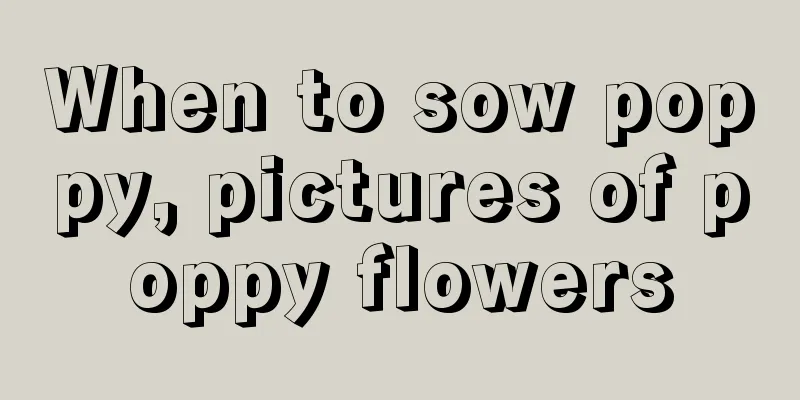When I put half-dead succulents in a vase, big white roots immediately emerged. This is the trick I rely on in the summer!

Soil cuttings rootingThe temperature is high in summer, and the substrate for cuttings must be breathable, moisturizing, and heat dissipating quickly. The following types of granular soil are very suitable for summer cuttings, and they are also common around us. 1. Cuttings in sandy soil Sand is river sand. Take a bag and sift it at home. It should be as coarse and fine as the one shown in the picture below. Wash it 2-3 times with boiling water, or soak it in a solution of carbendazim for 30 minutes to sterilize it. Unsterilized soil may contain bacteria and insect eggs, so it is best to clean it up. When taking cuttings, you can first spray the sand with water, and then place the succulent leaves on it. The larger leaves can be placed upright on the sand against the wall of the flowerpot, or inserted shallowly into the soil. Be careful not to insert them too deep. Leaves with smaller curvatures can be placed directly flat on the sand. It is best to place it in a cool and ventilated place at home, and expose it to the sun in the morning and evening after it sprouts. Don't move the leaves out of curiosity during the process. The succulent leaves and flower heads that survive the disaster are very likely to black rot again when they are re-cut. Huahua recommends: poke a hole in the sand at the edge of the flowerpot with your finger, and pour water into the hole each time you water, directly into the bottom of the pot. This will reduce the risk of black rot and waterlogging, and ensure normal rooting! 2. Vermiculite Vermiculite is actually a kind of mineral. We always buy a few bags of it when we buy succulents. It is not only rich in nutrients, but also has small temperature changes, making it very suitable for rooting cuttings. Vermiculite particles vary in size. When placing succulent leaves on it, the rooting part should be close to the soil surface. You can place it against the edge of the pot and press it down with a few small stones if necessary. During the cutting process, keep it in a cool place and keep the soil in the pot moist. Vermiculite will expand a little after absorbing water, so when you see the soil level drop and the color turn white, water it quickly! 3. Medical stone, perlite Medical stone and perlite are also suitable for summer cuttings, because they do not absorb much heat, so flower lovers in high temperature areas can give it a try~ For flower lovers who use medical stone and perlite for cuttings, it is best to use a container with a closed bottom, because their particles are relatively large. Cuttings mainly use the water vapor between the stones to take root. Containers with holes will leak as soon as they are watered, so be sure to pay attention! Water cutting rootingIn summer, succulents planted in soil are prone to rot, so water planting is safer. Generally, clean water can be used. If you want to increase the success rate, you can also add some rooting powder, or use water soaked with willow branches. Unlike other flowers, succulents cannot be really inserted into water, especially in summer, they are easy to rot. They only need to use water vapor to take root. Here are some very convenient techniques, everyone hurry up and learn~ 1. Small-mouth glass bottle The mouth of the glass bottle is small and relatively stable. The yogurt bottle we usually drink will do. Wash it, pour 1/3 of clean water into it, and insert the succulent into the mouth of the bottle. It does not need to come into contact with water. Put it in a cool place and it will take about a week for the roots to take root. If your succulents are slow to take root, it is best to change the water every 3-5 days and make sure to keep them in the shade and away from the sun! 2. Plastic bottle leaf inserting machine Cut a few small holes in the body of the plastic bottle and put the succulents on the small holes. Heavier succulents can be fixed with tape. The mouth of the bottle should be open, otherwise the steam inside will be too hot. Just put it in a cool place~ This method has the fastest rooting speed. The root system can be seen in about 3-5 days. Don’t be too impatient. Wait until the buds emerge before planting! 3. Other rooting tips For flower lovers who think the above method is too troublesome, there are some other lazy rooting methods, such as using a steamer, filling the pot with water, and placing the leaves on the steamer. No matter how small the leaves are, they can be placed. Make sure the rooting part is facing the small holes on the steamer. This is more accurate! A single layer of gauze is fixed on the water bowl with a rubber band, and the succulent leaves are placed on the gauze. The used popsicle sticks can also be made into a stand. Just fix the two ends with tape. Cut the straw into three sections and tie them with a rubber band to form a triangular bracket, into which the succulents can be embedded. Cuttings look simple Details are important What other tips do you have for cuttings? Please share it generously~ |
>>: How to plant cyclamen seeds
Recommend
Introduction of new varieties of apple seedlings
1. Peach Apple It is a late-ripening variety with...
The efficacy and function of summer plum
The ornamental value of summer plum Wintersweet i...
Aloe Queen Origin and Sowing Method
1. Sowing method Generally, after germination, it...
What fertilizer is best for Clivia to grow well (What fertilizer is best for Clivia to bloom)
What fertilizer is best for Clivia As for the pla...
Clivia species and pictures, what color is it
1. Varieties and pictures 1. Monk: It is also kno...
Can philodendron be hydroponically cultivated? Hydroponics cultivation methods and precautions
Can philodendron be grown hydroponically? Philode...
How to grow Dendrobium officinale
Cultivation method of Dendrobium officinale Pot s...
Rambutan fruit seed potting tutorial
1. Remove the seeds Pick the ripe rambutan fruit,...
The difference between blue flower and blue snow flower
1. No difference Blue flower dan is blue snow flo...
How to remedy the yellowing of Clivia leaves?
Clivia is famous for its thick and bright leaves ...
When is the best time to sow cyclamen?
Cyclamen sowing time Cyclamen is also known as ra...
What are the different varieties of Polygonatum?
Cultivated Polygonatum varieties The main cultiva...
How to save seeds from blackberries? How to collect seeds yourself
How to save blackberry seeds Blackberry is also c...
Does Chinese evergreen like water or drought?
Does Chinese evergreen prefer moisture or drought...
How to trim colorful pepper potted plants to look good
When is the right time to prune colorful pepper p...









